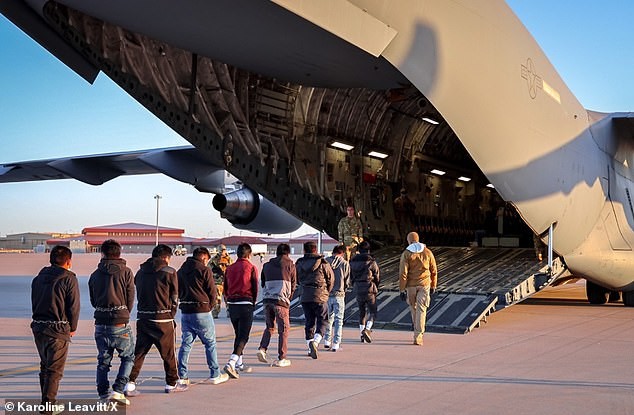
The White House confirmed Tuesday that the first flights transporting undocumented immigrants from the United States to Guantánamo Bay, Cuba have begun, marking the start of what the administration calls the "largest deportation operation" in U.S. history.
White House Press Secretary Karoline Leavitt announced the commencement of flights during an appearance on Fox Business, though specific details about the number of deportees or their final destinations were not disclosed.
The naval base at Guantánamo Bay is being prepared to accommodate up to 30,000 detained migrants, with extensive preparations already in progress. Military personnel are constructing a tent city separate from the base's existing detention facility, with over 50 tents established in a fenced area near the "Migrant Operations Center."
To support the expanded operation, hundreds of military members have been deployed to the base, including Marines and National Guard military police. The facility, which typically houses around 4,200 residents, will require increased supply deliveries and enhanced infrastructure.
Several countries have agreed to cooperate with the deportation efforts. Venezuela has approved repatriation flights, while El Salvador's President Nayib Bukele offered to house deportees of any nationality in the country's mega-prison facility for a fee.
Immigration enforcement actions have intensified across multiple U.S. cities, including Chicago, Atlanta, Los Angeles, and Austin. Immigration and Customs Enforcement (ICE) reported making approximately 6,000 arrests since the operation began, with daily arrest targets set between 1,200 to 1,500.
The administration faces several challenges in executing this mass deportation plan, including budget constraints, limited detention space, and diplomatic hurdles with some countries reluctant to accept deportation flights. Additionally, several legal challenges have emerged, including a lawsuit from Quaker groups opposing new policies allowing enforcement actions in previously protected spaces like churches.
This marks a significant shift in U.S. immigration enforcement, with Guantánamo Bay returning to a role it played in the 1990s when it housed thousands of Cuban and Haitian migrants. The current operation's scale and scope represent an unprecedented expansion of the facility's migrant detention capabilities.